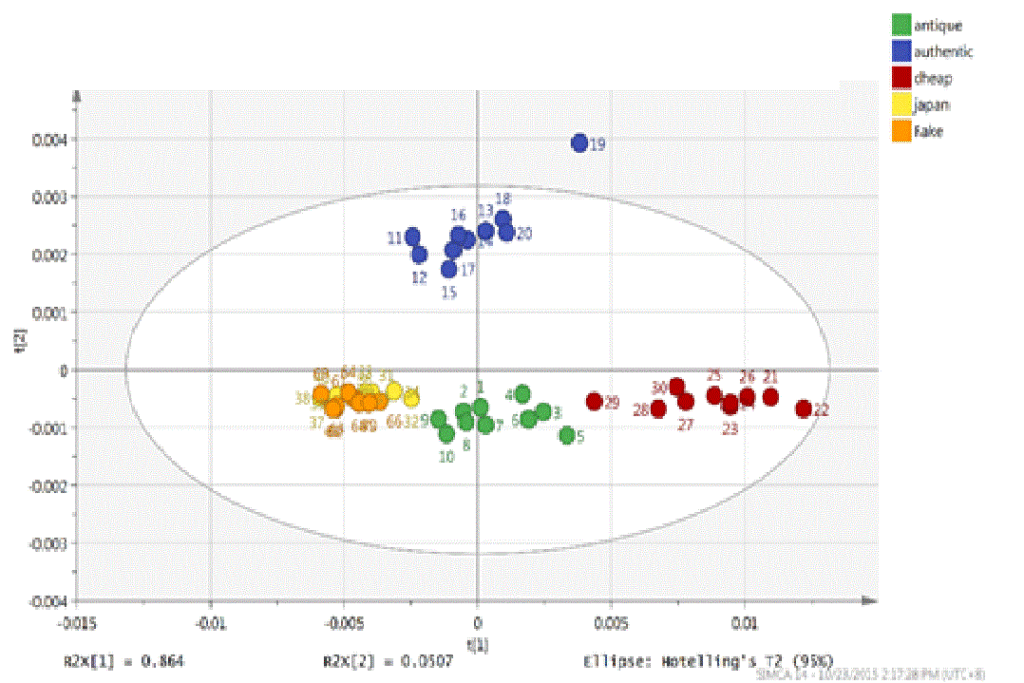A couple years ago I wrote about how there are a few  people working on a new technology here that uses multiple lasers to analyze the chemical components of pretty much anything, and one of the things they could do is to test what’s in Yixing clay. I’ve been working with these folks since then to help them come up with ways that will have practical applications for people who use Yixing pots. They have also improved the technique they’re using as well as the sensitivity of the data, and I thought I can write an update on some of the things they’ve done recently with a few pots of mine.
Basically, I gave them four pots to test, without telling them previously what they were. The idea was to see if the analysis might yield any data that is interesting, and if so, what that might be. The pots I gave them were 1) a regular yixing pot I bought many years ago from a Shanghai tea market, 2) an antique that is an export to Japan, 3) a Japanese tokoname pot, and 4) a fake yixing (it’s so obvious it’s fake it’s pretty painful) but made in the style of a yixing pot, complete with “Zhongguo yixing” seal at the bottom, but the clay is obviously off, also bought from Japan. The experimenters also added one of their own, called “cheap” in the data you see below.
The way they do this analysis is to basically place the teapots on their testing platform, and do a series of laser shots to vaporize a little tiny bit of the teapot, then the second laser does a spectrum analysis of the puff that is created. It looks like this: So the results of the tests on the five teapots, visualized for simplicity, is as follows:
So the results of the tests on the five teapots, visualized for simplicity, is as follows:
The X and Y axis are simplifications of the actual data, of which they have about 51k datapoints for total for the five teapots. You can see that the yellow (Tokoname) and orange (fake yixing) almost completely overlap – and in fact if you go find the underlying data shows that there is basically no chance this is happening by accident. In other words, the fake yixing is probably of Japanese origin using Japanese clay that is substantially similar to tokoname clay.
This sort of thing is quite interesting, because if we can build up a database of teapots, then it’s possible to actually use the database to try to authenticate teapots, perhaps even periodize them if we have enough data. That’s for the long run, but it’s quite enticing a prospect.
In the short term though, there are other things that this can do – for example, testing for heavy metals. None of the teapots sampled had any traces of heavy metals, such as lead. Since the tests are conducted on multiple locations on the teapots, it is quite reliable and not down to a single datapoint. That in and of itself could be of interesting application as well, considering how so many people are worried about what’s in their teapots.

 RSS - Posts
RSS - Posts
I took you at your suggestion and have been reading some of your old post-Covid posts. I haven’t been to…